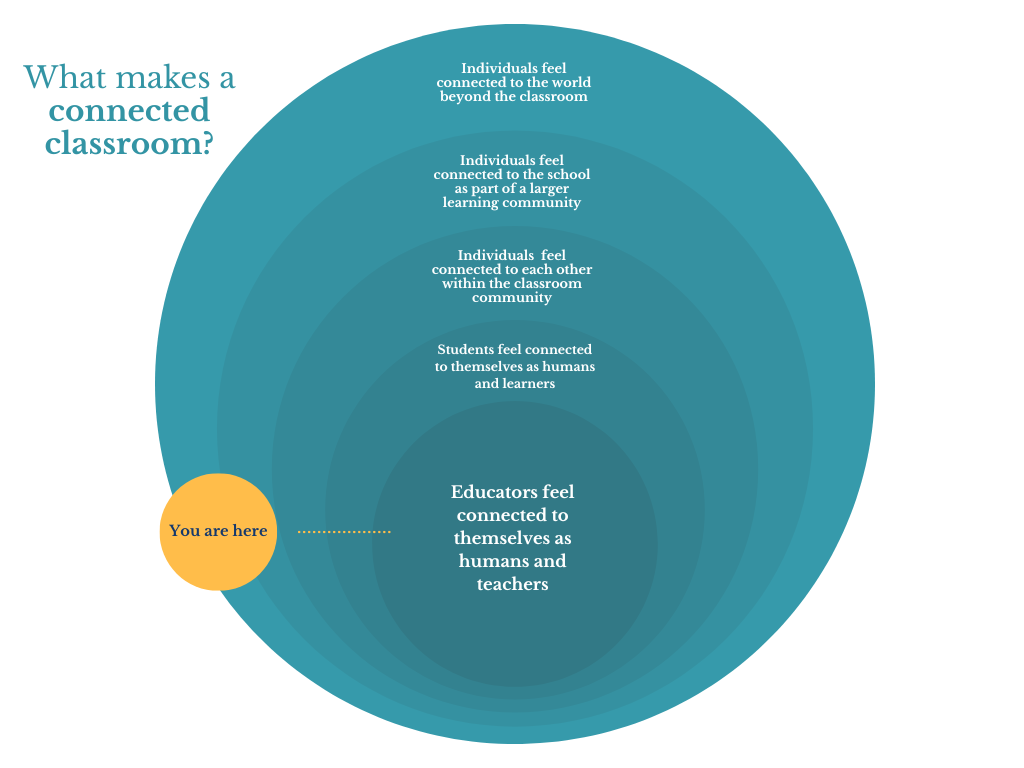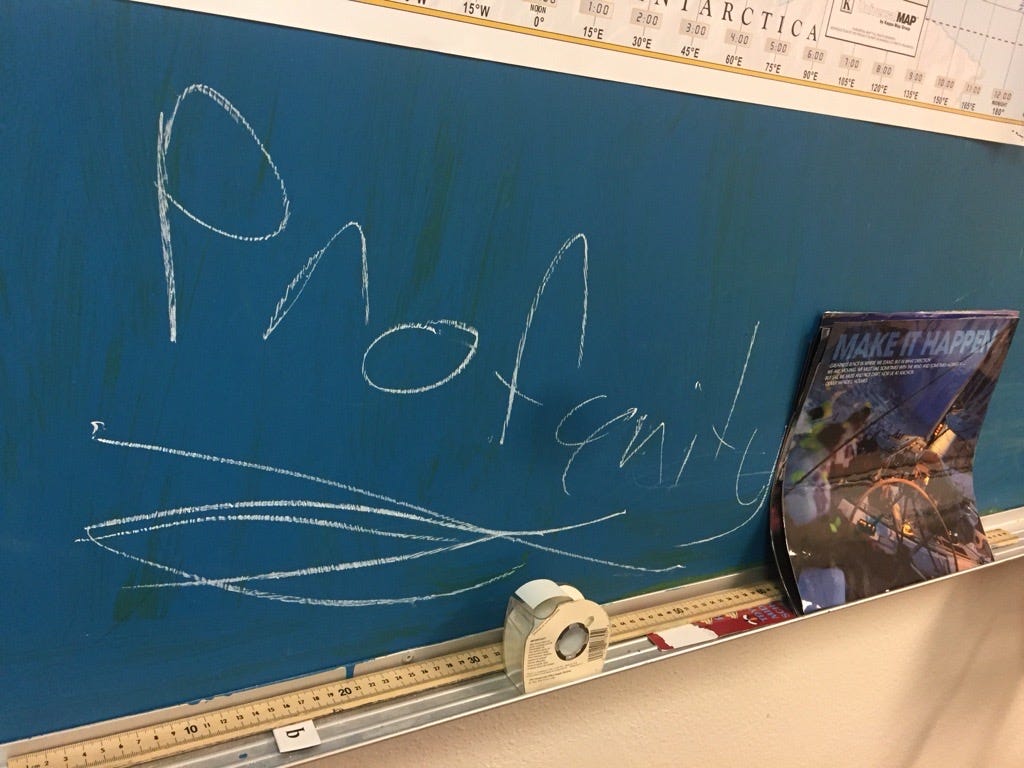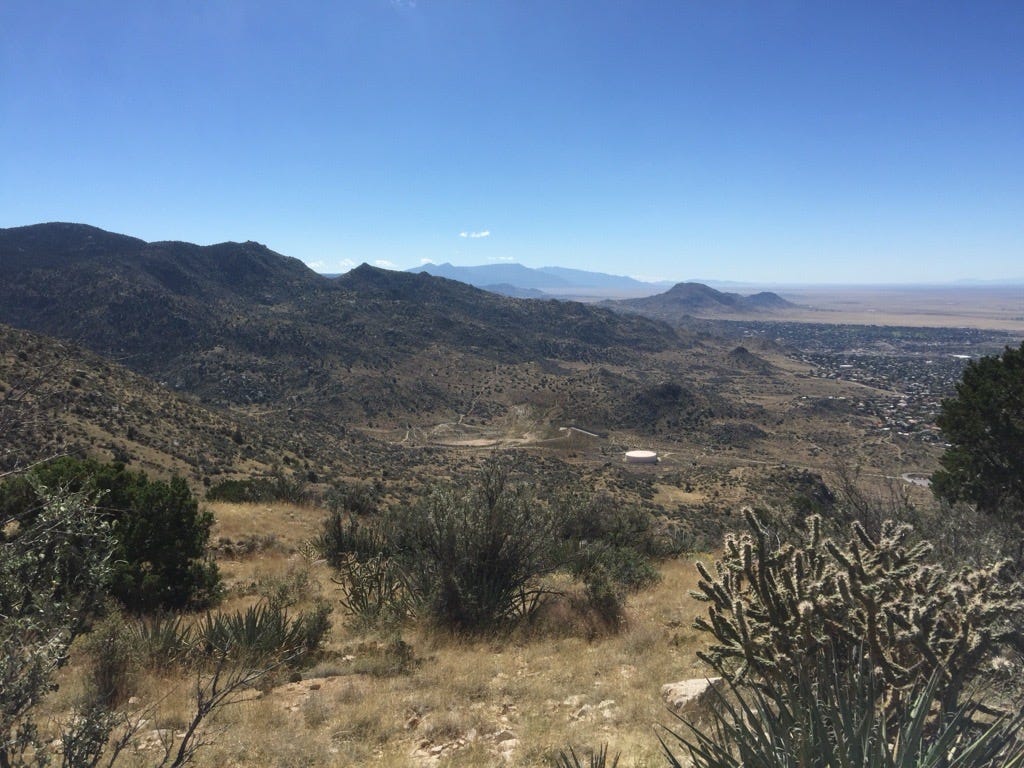How I Survived My Hardest Year of Teaching
Building a Connected Classroom, Part 1
Anyone else feeling a little disconnected and overwhelmed just by, well… existing in the world right now? Lately, I’ve been reflecting on what it means to stay grounded when everything around me feels uncertain. In times like these, reconnecting to ourselves isn’t just helpful; it’s essential.
I’ve been thinking a lot about resilience – the thing that helps us get through our hardest days and still stay open to joy, purpose, and connection. When we build resilience in ourselves, we create space for stronger, more grounded communities. And we need that kind of collective strength now more than ever.
My own experience has taught me that connection and resilience are deeply intertwined. To stay grounded, we must stay connected — to ourselves, to others, and to the purpose that brought us to this work in the first place.
This reflection has also led me to a bigger question: What does it really mean to build a connected classroom?
It’s a phrase that gets tossed around a lot — especially in the world of ed tech, where “connected” often means digital tools, devices, and platforms. But that’s just one layer. In this series, I want to explore the deeper meanings of connection in the classroom. I’ll be digging into what it looks like to build a learning environment rooted in relationships, reflection, and resilience.
We’ll begin at the center of it all: the educator (that’s you!).
Well, actually, we’re going to begin with me. A quick story about the most stressful year of my teaching career, what I learned from it, and how I (barely) survived.
School year 2018–2019. I had just moved to a new city, far away from where I had grown up and where I had started my teaching career. Everything was unfamiliar: city, school, subject, grade level. Whew! Just thinking about all that change and newness makes me want to give my former self a hug.
Unfortunately, without realizing it, I accepted a job at a school in turmoil. Because I wasn’t part of the community and I interviewed over the phone months before the school year started, I didn’t realize that they were down an administrator. An unseasoned assistant principal had assumed the role of the principal, leaving the assistant principal role open. Teacher turnover was high and key classroom and support positions were vacant. Without adequate and consistent leadership and staffing, the school’s restorative justice approach to discipline was failing miserably. I could go on, but I think you get the picture. It was bleak.
Of course, all of this organizational chaos manifested itself in my classroom in every possible way. Students entered my classroom in a completely unregulated state. Once inside, no one was immune from bullying: they bullied each other, they bullied me, they bullied any adult who entered the room. Every strategy I attempted to gain control failed: my clear, posted, repeated expectations were ignored, phone calls home made no meaningful impact, calls for administrative backup were fruitless, and relationship building attempts blew up in my face. Needless to say, not much actual educating of students happened. Every day felt like a fight for survival. More than a few tears were shed during the few minutes I had to myself during lunchtime each day.
Somehow I survived that school year, but I didn’t make it through unscathed. My health suffered. I was burnt out and chronically exhausted, despite the truly massive amounts of caffeine I consumed. I felt disconnected, ungrounded, and unbelievably stressed. I knew that I wouldn’t survive unless I forged a deep sense of support within myself. I needed to bolster my resilience; it was the only thing that kept me walking into that classroom every day.
What got me through? I leaned into my yoga practice and found refuge in hobbies that got me active and in nature. I journaled. I used a meditation app. I found connections with other teachers, forging a particularly meaningful bond with a paraprofessional who I could laugh with. I took a lot of time to reflect on my situation and what kind of work life I wanted. I ended up finishing the school year in one piece but decided to move to a different teaching position within the district. Holding on until the last day of school felt like an act of integrity, and leaving felt like an act of care for myself.
The lessons I learned from that experience helped me face all sorts of subsequent difficulties, both big and small, professional and personal. The tools and resilience I built during that time are also helping me now, as I grapple with the uncertainty and discomfort I feel when hearing the news every day.
Sadly, my experience is not rare. It is something that plays out in classrooms across the country every year: stressful, untenable teaching conditions that lead to teacher burnout and turnover. There’s a lot about the teaching profession that could be improved to make it more sustainable and joyful, but I think that we must start by building resilience within ourselves. Educators cannot foster meaningful connections for their students unless they have it within themselves. They cannot show up for their students day after day and do the deep work of educating if they are not connected: to their bodies, their values, their strengths, and their purpose.
I’ve found a lot of insight and affirmation in the work of educator and coach Elena Aguilar. In her phenomenal book Onward: Cultivating Emotional Resilience in Educators, she outlines twelve strategies for educators to develop greater resilience — not just to survive teaching, but to help us transform ourselves and our schools in the process.
“We cultivate our resilience and become stronger so that we can help others become stronger; we cultivate our resilience so that we have energy to heal and transform the world.”
Some of Aguilar’s strategies, like “know yourself,” “take care of yourself,” and “build community,” echoed what I had already started to do during my stressful year — often instinctively, without realizing I was building the foundation for something more sustainable. If there’s one thing I hope you take away from this piece, it’s this: your connection to yourself matters. It matters for your students, your colleagues, your school — and most importantly, for you.
As Aguilar writes:
“Resilience is not a magical elixir that will eliminate all of the physical, emotional, or cognitive demands of teaching, but resilience can substantially and dramatically increase our ability to manage the daily stressors and rebound from inevitable setbacks. Resilience allows us to listen to students and their families and take in painful information because resilience ensures that we can keep our hearts open to what we see and hear. Resilience makes us confident in our ability to manage our own and others' intense emotions. Resilience also enables us to have difficult conversations, and if we aren't having difficult conversations in our efforts to transform schools, we're probably not making meaningful progress. Resilience will bring communities and educators out of our silos and into healthy camaraderie. As we strengthen our resilience, we'll have more energy to direct toward participating in transformational school change.”
Resilience isn’t just a personal virtue; it’s a force for collective change. And it starts with choosing to care for yourself, every single day. Aguilar’s work reminds us that resilience is more than an internal resource — it’s the groundwork for building the kind of trust, empathy, and connection that define truly connected classrooms.
So where do we go from here?
As we continue to explore what it means to build a connected classroom, we’ll consider what real self-care looks like for teachers. Then we will move outward from the educator’s inner world to the students we serve, exploring how to cultivate connection in the classroom itself.
And if you're looking for some simple ways to get grounded, I've found a lot of comfort in the work of Elena Aguilar (she did a great interview on the Cult of Pedagogy podcast a few months ago), mindfulness apps like Headspace and Insight Timer, and some Yoga with Adriene on YouTube. Also, as the kids say: touch grass!
Nothing fancy — just small practices that may help you connect with yourself.
If any of this resonated with you, I would love to hear your thoughts. What helps you stay grounded in your work these days? What does connection to yourself look like in your life right now? Drop a comment below!






